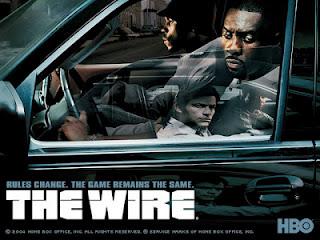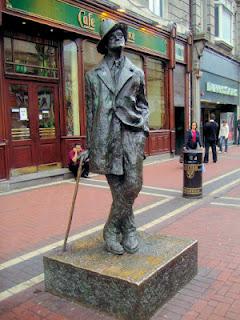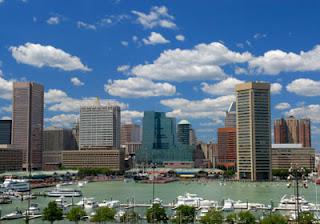 This week Grantland.com, ESPN’s self-styled “sports and pop-culture” offshoot,is hosting Smacketology [1] an interactive March-madness-style tournamentwhere readers vote on matchups of 32 of the most memorable characters from theacclaimed HBO series The Wire. Thistournament exists, I suppose, as a pop-culture anticipation of the upcomingNCAA Men’s Basketball Tournament [2], but also because so many of the Grantlandsenior staff are semi-obsessed with the show, which to be fair, does boast anundeniably impressive roster of realistic, interesting characters. Why elseinvent this completely meaningless tournament based on a show that’s been offthe air for several years?
This week Grantland.com, ESPN’s self-styled “sports and pop-culture” offshoot,is hosting Smacketology [1] an interactive March-madness-style tournamentwhere readers vote on matchups of 32 of the most memorable characters from theacclaimed HBO series The Wire. Thistournament exists, I suppose, as a pop-culture anticipation of the upcomingNCAA Men’s Basketball Tournament [2], but also because so many of the Grantlandsenior staff are semi-obsessed with the show, which to be fair, does boast anundeniably impressive roster of realistic, interesting characters. Why elseinvent this completely meaningless tournament based on a show that’s been offthe air for several years? Of course, just because it’s meaningless doesn’t mean people don’t have strong opinions. From who will prevail (the odds-on favorite [3] isOmar, the homosexual street vigilante), to who was “snubbed” (no Ellis Carveror Rhonda Pearlman?!), to how each character was seeded (Jimmy McNulty is just a “3”seed?). For me, this tournament is nothing more than a curiosity, but I do haveone beef. It seems that the tournament committee (or whoever at Grantland putthis thing together) made one massive, unforgivable omission, the biggestcharacter of all, the show’s beating heart, the city of Baltimore.
Place as Character
And that leads me to two separate but related thoughts. First, the ideaof place, of setting, as a principal character. The Baltimore shown in The Wire is as inseparable from the showas the main criminals and cops. We see the decaying underbelly of the city. Thecharacters inhabit it; they create and are the products of its devitalized socialmilieu. Dirty streets, boarded-up houses, depressed stores, corners surrenderedto thugs and drug dealers. We see the violence that rots the city’s poor (andlargely black) neighborhoods. We see the effects of the corruption andbureaucratic malaise, the numbing inertia of large institutions that areincapable of arresting the long social and economic decline of huge parts ofthe city. This may all seem rather bleak, but the show is vibrant because ofits universe of characters and because all those characters lived in a “real”place. A great deal of the show takes place outside, on the city streets, atthe port, on rooftops, at neighborhood bars and parks. If the city plays acentral role it’s because the show was almost entirely shot on location [4]. David Simon, a former Baltimore Sun writer and the show’s creator, knows Baltimoreand its criminal street scene intimately. That realism is transferred to thescreen. This is only one view of Baltimore, the saddest parts of the city, but what’sseen on the screen is more or less true.

Joyce immortalized in his Dublin
This reminds me of the way other places have been used to emphasize andenliven great art. A prime example is the Dublin of James Joyce’s stories andnovels; Dublin is as much a character in Ulyssesas Leopold Bloom or Stephan Dedalus. Joyce famously said, and I’m paraphrasing,that if Dublin were to vanish from the Earth he hoped it could be reconstructedbrick-by-brick from the pages of his book. Just note the intricacy of how theDubliners traverse and inhabit the city in the novel. Even if you’ve never seenDublin, as I hadn’t when I first read the book, Joyce’s prose renders powerful imagesand especially powerful impressions in the mind; in the end, the story is inseparablefrom the place. Joyce’s stories and characters are universal, they convey thehuman condition, but they’re grounded in a time and place. They’re intertwinedwith the Dublin of the author’s youth. There are countless authors who, like Joyce,create character from setting, Faulkner’s Mississippi and Dickens’ London are acouple of prominent examples.Jumping to a different medium, think of Martin Scorsese’s best films,they take place in New York, from TaxiDriver, to Raging Bull, and Goodfellas. And it’s not the glamoroushigh-rises of Wall Street or midtown Manhattan or the wealthy neighborhoods ofthe Upper West Side, but working-class sections of the Bronx and Queens; therough, lonely night streets. His characters are New Yorkers. It’s hard toimagine Travis Bickle, the anonymous taxi driver, prowling the streets of anyother city, and of any other city being as hostile and hard on him as 1970s NewYork. And as Henry Hill says in Goodfellas,“We grew up near the airport [5], it belonged to us.” Indeed the mid-levelcrimes and heists of Hill and his gangster friends never rise above or beyond thestreets of their neighborhood.
Baltimore on Screen
But this leads me to my second thought. As effective as The Wire is in incorporating Baltimoreinto the story, it shows a pretty grim side of the city. My hometown appearssimultaneously dysfunctional, dangerous, and genuinely soul-crushing.Realistic or not, it’s not really how I want the image of the city conveyed tothe rest of the world. I admit to a certain possessiveness and defensiveness inhow Baltimore is depicted in the media. I suspect this is true of a great manypeople who take pride in their cities but who live in places that are onlysporadically shown in the mass media. Some cities are used so commonly assettings for shows, movies, novels, any fiction, that you can gain a fairappreciation for the nuances of the place: New York and Los Angeles mostobviously. Other common settings include Chicago, Washington, Miami, Boston, and SanFrancisco. London and Paris are popular international locales. But for cities like Baltimore, such exposureis intermittent and shows like The Wirecast an incomplete perspective.

A more attractive side of Baltimore
After all, the city and the wider metro area aren’t so bad. Of all theurban areas in the world, Baltimore has the 45th largest economy,bigger than places like Milan (46), Vienna (50), Vancouver (58), and Berlin(69). It’s home to a rich 300-year history. It’s natural setting on a wideestuary near the Chesapeake Bay and along the Piedmont fall line make for beautifulscenery, especially during the sunny green summer. You don’t get to see much ofthat in The Wire. For that matter youdidn’t get to see much of it in another critically-acclaimed Baltimore-based show,Homicide, which aired on NBC and predatedThe Wire but covered much of the samesubject matter. There are examples that show a more positive side of the city,like (picking recent examples) the movies Ladder49 and He’s Just Not That Into You [6].There are also the praised films like Dinerand Avalon that show a Baltimore ofthe 1950s, the city of my parents’ youth. I just wish these depictions createdas powerful an impression as The Wire.My emotional response to how Baltimore is shown in the media may be abit silly, but I suspect denizens of other under-used cities (e.g., and pickingat random, Atlanta, San Diego, Dallas, Houston, Detroit, St. Louis, evenPhiladelphia) may feel the same way. Oh well, I guess that’s the way it is.Consider that when The Wire wasfilming, the city warmly embraced the production. Unflattering as it may havebeen, it was exciting to have such an impressive show set in town. Like Joyce’searly 20th century Dublin, early millennial Baltimore has beenimmortalized in one of the best ever television programs. That can’t be allbad.
---
NOTES:
[1]A play on the ESPN’s “Bracketology”, which is the pseudo-sport/science developedover the last decade plus to project the NCAA Basketball Tournament field.Though I don’t really understand the full etymology of “Smacketology”.
[2]Which starts next week.
[3]And President Obama’s pick, FYI.
[4]I can attest to this first hand. During Season 5 the parking garage of myoffice building was partially closed one day while an episode was being filmedon the top floor. Also, my girlfriend appears as an extra, a reporter at apress conference, in one Season 5 episode.
[5]Idlewild Airport, since renamed to JFK International Airport.
[6]Other examples include: Sleepless inSeattle, Enemy of the State, The Replacements, The Accidental Tourist, and TheSum of All Fears. The last probably isn’t a positive example. In it, thecity is largely flattened by a terrorist’s nuclear weapon. I’ve joked that theproducers chose to show Baltimore destroyed because that result would be far less upsetting to post-9/11 Americans than say, if San Francisco had been nuked.

